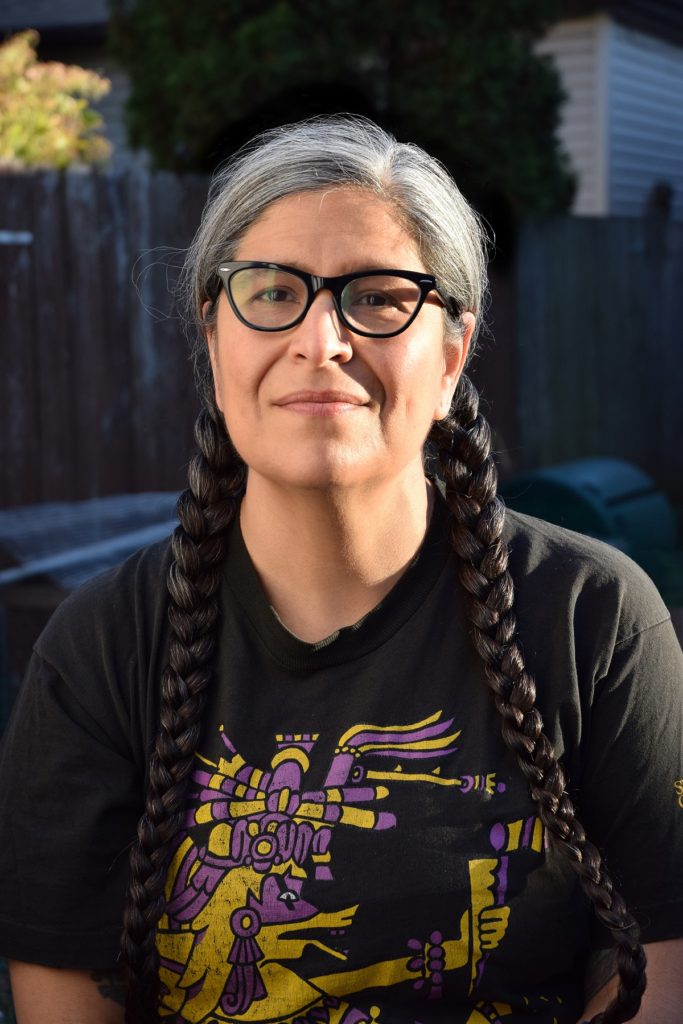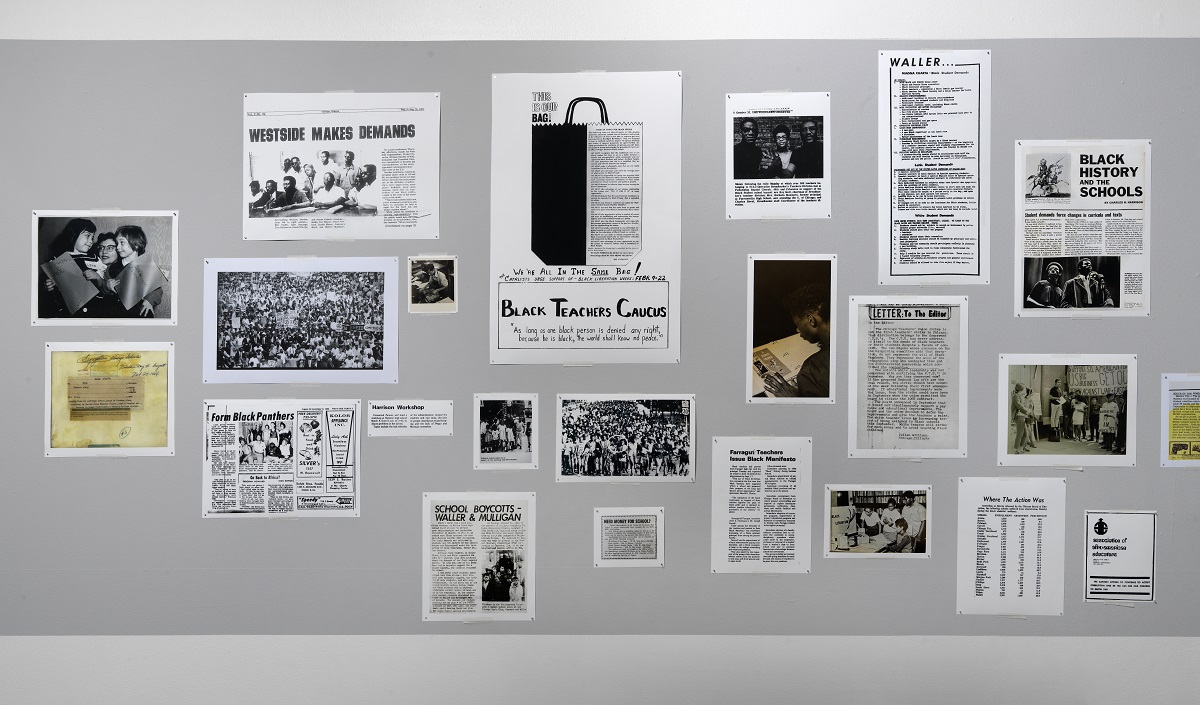From the early 1960s through the 70s, hundreds of thousands Chicago Public Schools students, parents and teachers from predominantly Black and Latino communities participated in a number of boycotts and walk-outs in protest of school segregation and inequality. These protests, which have largely faded from the public eye today, are the subject of a years-long research effort by Pilsen-based artist and educator, Nicole Marroquin.
“I’m looking at movements led by young Black students,” Marroquin said. “I’m curious about the origins (of different movements), about what led to it, who the solidarities were and where the movements diverged.”
Marroquin, a sculptor, associate professor at the School of the Art Institute of Chicago and a public school art educator has been digging into Chicago’s public school uprisings since 2016. Using this research to create a “skeleton” of what happened in the city in the 60s and 70s, she said she wants to shed light on the systemic inequalities schoolchildren faced across the South and West sides during this time, and the momentum for radical change.
Over the years her art and research has been presented at venues across the city, such as the Hull House Museum, Northwestern University, Chicago Cultural Center and the Museum of Contemporary Art. In 2014, Marroquin was also a Joan Mitchell Fellow at the Center for Racial Justice Innovation.
Much of this project’s research involves collecting newspaper articles from microfilms available at the Harold Washington Library downtown, so as to more closely understand what it was like to be on the ground. In this process, Marroquin said that she seeks to demythologize the “predigested” stories within American history that many people learn from a young age. As an example, Marroquin pointed to the enduring legend of George Washington cutting down a cherry tree as a child, which did not happen.
In one such example of this underexplored history, Marroquin points to a massive student walk-out in 1963 known as Freedom Day. In protest of school segregation, more than 200,000 students and tens of thousands of teachers—about half the district—boycotted Chicago’s public schools. Many protestors marched around City Hall demanding integration and equitable school funding.
The latest culmination of this research took the form of a gallery Marroquin curated earlier this month in a multi-artist exhibition at the Hyde Park Art Center, “Language Between Worlds.” In her portion of the exhibition, Marroquin assembled dozens of archival photographs and newspaper clippings documenting these uprisings into a large collage along the art center’s gallery wall. Yellowed headlines like “West Side Makes Demands” and “Black Teachers Caucus” are paired alongside photos of groups of students—some in school, others protesting and a few with teachers.

Marroquin said she takes a relaxed approach to her archival work and is content to “just see what happens” from the information that surfaces during these deep dives. In one such instance, she was surprised to find so many moments of teacher and student solidarity during these protests.
In the process, Marroquin had questions like “How can we forget (this history) so quickly?” and “what impact did the young people make?”
Beyond this inquiry, she is also interested in the relationships that people have with the information she is sharing. Marroquin said she was interested in the “public shared concepts of consciousness around history” and using this work to tell a more complete story about what took place within the city.
Noting that people today are inundated with media, Marroquin said she hopes to cut through the clutter with her art.
“I’m going on these drifts. Imagine a sperm whale—they have those giant filters in their mouths. There’s just like tons of water flowing in and flowing out,” Marroquin siad. “In the same way, that is how we just start absorbing all of this media. It’s just coming at us.”
Marroquin also said she wants to combat what she described as “propaganda” in popular media against participating in events like marches or protests. She said she often sees messages like “don’t march, don’t stand up, don’t take a stand” and argues that this passivity is ineffective in improving conditions for people.
Her next exhibition, an assembly of archival photographs of poetry communities from the late 1970s through the 80s, “Encuentros”, will open at the Poetry Foundation downtown on December 1.
HPAC’s “Language Between Worlds” exhibition, which ended on October 30, featured work from five artists using their craft to explore systemic racial inequalities throughout the U.S. Other artists included Nyame Brown, Jessica Vaughn, Chris Pappan and Bethany Collins.
This story is co-published with the Hyde Park Herald.
Monica Sager is a graduate student at Northwestern University’s Medill School of Journalism and has been working to cover health and science within the South Side this fall. They previously wrote about the Englewood Love Fridge for the Weekly.

